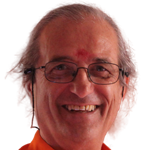Marmāṇi
Marmāṇi are vital energy points on the surface of the body. The main traditional schools present 107. It is possible to compare receptors in modern medicine. At the time, a special neurological structure was identified (cells or tissues sensitive to the various forms of energy) of which, in fact, are part of the thermal, chemical, pressure and mechanical receptors.
The first reference to these marmāṇi is found in the Atharvaveda. Some scholars believe, however, that the concept of the marmāṇi ‘s points goes back to a very ancient Ayurvedic test: the Suciveda of which, however, no trace remains. It is in the Susrutasamitha (the book of the Surgeon Susruta written more than 2000 years ago) that we begin to find more definite references concerning their dislocation and the therapeutic use that can be made of them. Surgeon Susruta, among other things, anticipated many concepts of modern medicine: he studied in detail post-mortem dissection (autopsy) and plastic surgery procedures that were later used as a basis for modern surgery. He used methods to weld broken bones with nails, developed a treatment, based on bloodletting, to treat blood disorders and was able to identify the marmāṇi and its connections to vital organs with scientific precision. He established that some external trauma on these points could be serious or fatal.
Marmāṇi today are mainly classified on the basis of three factors:
- The anatomical site in correspondence of: blood vessels (sira), muscles (mamsa), ligaments (snayu), bones (asthi), joints (sandhi)
- The tissues and structures of which they are composed;
- Skin redness due to their stimulation.
It is believed that by stimulating them with appropriate treatments, massage, application of herbs (lepana) or essence, it is possible through them; adjust functions of the dosa and the physiological processes of the organism.
They constitute the venue of the vital force of prana, and the four types of sira (vessels), they control the passage of nutrients and fluids in the direction of muscles, ligaments, bones and joints. Three of these are called Mahamarma for their vital importance and they are stimulated before the main treatments to allow the circulation of vital energy: adhipatimarma, placed at the top of the head; hrdayamarma placed in the heart area; bastimarma placed halfway between the pubis and the navel.
In general, according to the different schools, they are presented as follows:
- By Area: 22 placed in the upper limbs, 22 in the lower limbs, 12 between the abdomen and thorax, 14 between the trunk and back and 37 between the neck and the head;
- For the Structure: 11 on muscle structure, 41 on blood vessels, 27 on ligaments, 20 on joints, 8 on bones;
- For Symptomasa: ConsequenceofanInjury:9cause instant death (sadyahpranahara), 8 are painful (rujakara), 33 cause slow death (kalantara pranahara), 44 cause disability (vikalatvakara), 3 cause death if they sell affected by a external object (visalyaghnakara).


